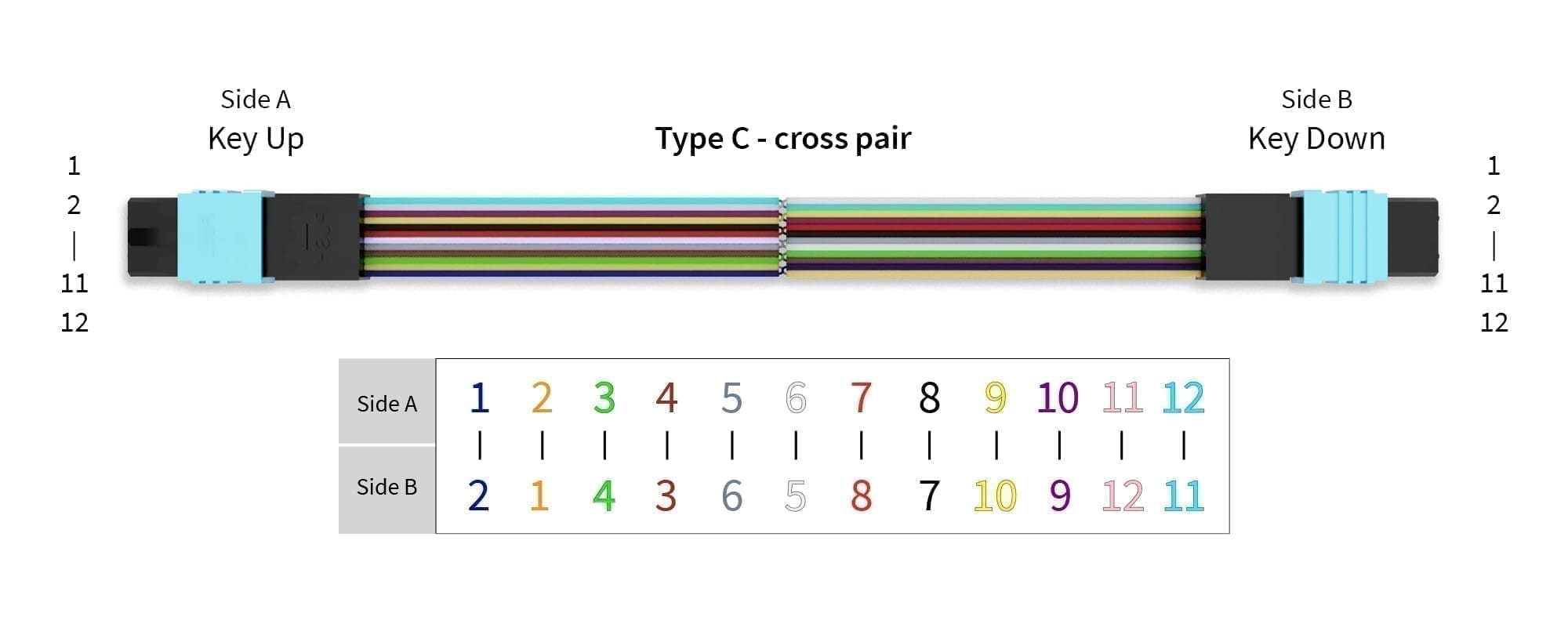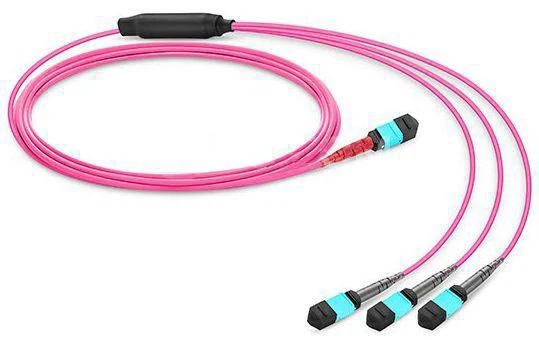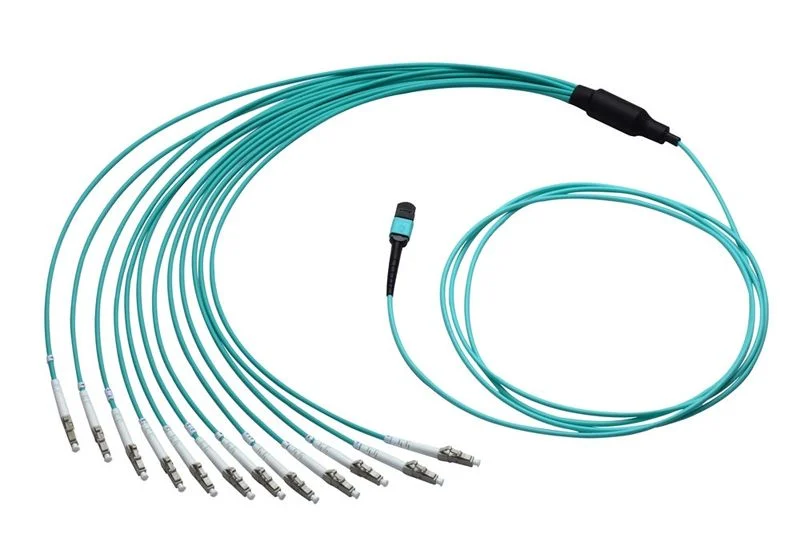Understanding MTP/MPO Fiber Optic Cables: Types, Applications, and Advantages

An Overview of MTP/MPO Fiber Optic Cables
MTP/MPO fiber optic cables are highly versatile and efficient cable assemblies widely used in various industries. These cable assemblies provide high-density connectivity, allowing for the connection of multiple fibers in a compact space. Designed to simplify fiber optic installations, MTP/MPO cable assemblies offer a plug-and-play solution that reduces installation time and minimizes the risk of errors.
By understanding the types, applications, and advantages of MTP/MPO cable assemblies, IT professionals, network technicians, and fiber optic enthusiasts can make informed decisions when it comes to their connectivity needs. Whether it's for data centers, telecommunications networks, or other high-density applications, MTP/MPO cable assemblies provide a reliable solution for optimizing network performance.
Exploring Different Types of MTP/MPO Cables
MTP/MPO cables come in various types and configurations to suit different applications and requirements. Let's explore the different types of MTP/MPO cables available:
Single-mode vs. Multimode Cables
Single-mode MTP/MPO cables are designed for long-distance transmission and offer higher bandwidth. They are ideal for applications that require data to be transmitted over longer distances, such as telecommunications networks or backbone connections. Single-mode MTP/MPO cables use a smaller core size, allowing for a single pathway for light to travel through, resulting in reduced signal loss and higher transmission speeds.
On the other hand, multimode MTP/MPO cables are suitable for short-distance applications and are more cost-effective. They are commonly used in local area networks (LANs), data centers, or fiber optic distribution systems where shorter transmission distances are required. Multimode MTP/MPO cables have a larger core size which allows multiple pathways for light to travel through, accommodating multiple modes of light propagation.
12-Fiber vs. 24-Fiber Cables
Another aspect to consider when choosing MTP/MPO cables is the number of fibers they contain. 12-fiber MTP/MPO cables are commonly used for duplex applications where two fibers are needed for transmitting and receiving signals simultaneously. These cables offer flexibility and can be easily deployed in various scenarios.
On the other hand, 24-fiber MTP/MPO cables provide higher density and are ideal for high-density applications that require a large number of connections within limited rack space. These cables allow more fibers to be connected in a smaller footprint, making them suitable for data centers or environments with high-density connectivity needs.
With these varieties and options available, IT professionals, network technicians, and fiber optic enthusiasts can choose the most appropriate type of MTP/MPO cable based on their specific requirements.

Practical Applications of MTP/MPO Cables
MTP/MPO cables find practical applications in various industries and environments, thanks to their high-speed, high-density connectivity capabilities. Let's explore some of the common applications of MTP/MPO cables:
Data Centers and Server Rooms
In data centers and server rooms, where efficient cable management and high-density connections are crucial, MTP/MPO cables are extensively used. These cables enable the transmission of large amounts of data at high speeds, making them ideal for connecting servers, storage devices, and networking equipment. The compact design of MTP/MPO cables allows for better airflow and reduces cable clutter, optimizing the overall performance and efficiency of data center operations. Additionally, the plug-and-play nature of these cables simplifies installation processes, saving valuable time during setup or maintenance tasks.
Telecommunications and Networking
Telecommunication networks heavily rely on MTP/MPO cables due to their scalability and reliability. These cables are widely used in telecommunications infrastructure for connecting network equipment, such as switches, routers, or optical transport systems. MTP/MPO cables provide a cost-effective solution for backbone connections in telecommunication networks by efficiently transmitting large volumes of data over long distances.
Moreover, MTP/MPO cables have become an integral part of networking applications that require fiber optic distribution. They are commonly implemented in fiber-to-the-home (FTTH) installations to connect central offices with customer premises equipment. In networking environments where high-density connectivity is essential, such as LANs or campus networks, MTP/MPO cables offer a streamlined solution for managing multiple connections within limited space.
With their versatility and reliability, MTP/MPO cables have become indispensable components in various optical fiber cable implementations across different industries.
Benefits of Using MTP/MPO Cable Assemblies
MTP/MPO cable assemblies offer several advantages that make them a preferred choice for high-density fiber optic connections. Let's explore the benefits of using MTP/MPO cable assemblies:
High Density and Space Efficiency
One of the key advantages of MTP/MPO cable assemblies is their ability to provide high-density connectivity. These assemblies allow more fibers to be connected in a smaller space compared to traditional fiber optic cables. This high-density capability is particularly beneficial in environments with limited rack space or applications that require a large number of connections within a confined area.
By utilizing MTP/MPO cable assemblies, organizations can optimize their infrastructure by reducing the physical footprint required for fiber optic installations. This not only saves valuable space but also enables better airflow and improves overall cable management.
Quick and Easy Installation
MTP/MPO cable assemblies simplify the process of fiber optic installations with their plug-and-play design. Unlike traditional cables that require individual terminations, MTP/MPO cable assemblies come pre-terminated with connectors, allowing for quick and easy deployment. The standardized connectors ensure compatibility and eliminate the need for time-consuming splicing or polishing.
The plug-and-play nature of MTP/MPO cable assemblies significantly reduces installation time, making them an efficient solution for network technicians and installers. Moreover, this streamlined installation process minimizes the risk of errors, ensuring reliable and consistent performance.
Overall, the advantages of high density and space efficiency, combined with quick and easy installation, make MTP/MPO cable assemblies a preferred choice for organizations looking to optimize their fiber optic connections.

Harnessing the Power of MTP/MPO Cable Assemblies
MTP/MPO cable assemblies provide a reliable and efficient solution for high-density fiber optic connections. By understanding the types, applications, and advantages of these cable assemblies, professionals can make informed choices that meet their specific needs.
With the ability to offer high-density connectivity and simplify installation processes, MTP/MPO cable assemblies empower organizations to enhance their network performance and optimize their infrastructure. These cable assemblies enable efficient cable management, reduce installation time, and provide space-saving solutions in environments with limited rack space or high-density applications.
By harnessing the power of MTP/MPO cable assemblies, organizations can ensure reliable and seamless fiber optic connections that support their growing data demands and contribute to overall network efficiency.
See Also
Exploring MTP/MPO Cables: Applications and Connectivity Solutions
Exploring IP68 Outdoor Fiber Optic Cables
Waterproof Connectors in FTTH Networks: Enhancing Performance and Reliability
Unlocking the Applications of MTP Connector Trunk Cables
Exploring Fiber Optic Cable Types: Single-mode vs. Multi-mode
About US
Follow Us
AnetFiber company's main products are indoor and outdoor optical fiber cables, outdoor waterproof pre-connected fiber-to-the-home products, PLC optical fiber splitters, optical fiber jumpers and pigtails, MTP®/MPO high-density big data product solutions, optical fiber field quick connectors and research and development molding, injection molding and production of optical fiber distribution boxes, optical fiber chassis cabinets, the market has expanded to the world, Europe, America, Asia, the Middle East and Latin America.
Address
Shenzhen City, Baoan District, Yanluo Street, Tangxiayong Community, Yangyong Industrial Road, Tonggangda New Energy Vehicle Park 406
Contacts
+86 199 2655 3586

